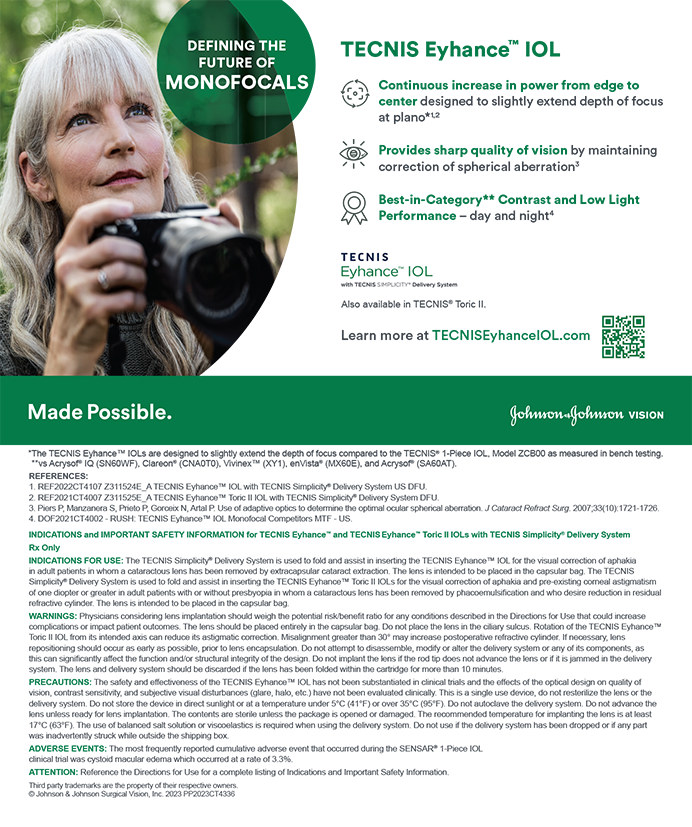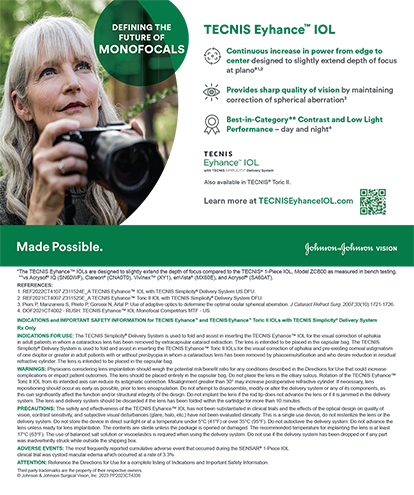
I concluded training and fellowship with my father, Stephen M. Weinstock, MD, in 2001. At the time, the landscape of cataract and refractive surgery was starkly different than today. LASIK was experiencing a true boom and dominating the refractive surgery market. During these formative years, cataract surgery occupied a relatively minor portion of my daily practice. Instead, it was an era of extensive lessons in refractive surgery—from mastering surgical techniques, particularly LASIK, to grappling with unique intra- and postoperative surgical challenges associated with using a microkeratome. Refractive procedures were typically performed on patients with low to moderate myopia and otherwise healthy eyes.
I also absorbed valuable lessons on postoperative patient management, which often was a formidable task. The preoperative phase was straightforward. Postoperatively, however, managing diverse personalities and conditions such as dry eye disease and night glare presented significant challenges.
Over the past 20 years, cataract and refractive surgery has evolved into a primarily lens-based subspecialty. It is a complex and challenging field that demands meticulous skill and experience. The decision-making process preceding surgery—especially for refractive cataract surgery—is challenging.
The availability of advanced IOL technologies has changed the preoperative conversation with patients about expectations and altered the criteria for using these lenses to achieve spectacle independence after cataract surgery. Despite technological progress, selecting the best lens for each patient remains a complex process. I emphasize to my fellows that the patient assessment must be as comprehensive as a detective’s investigation. It should incorporate the patient’s expectations, ocular history, lifestyle, and clinical examination findings to formulate the best plan.
Performing surgery poses the second challenge we refractive cataract surgeons face. We must focus on perfecting the surgical arena. Unfortunately, preoperative decision making and the patient evaluation and assessment often receive insufficient attention. Even seasoned surgeons with a successful track record encounter mistakes and complications. Postoperative management is equally critical, often requiring additional surgeries such as an IOL exchange, a piggyback lens, a laser enhancement, or ocular surface reconstruction to achieve the desired outcome.
Continuing to perform cataract surgery earlier on patients with presbyopia and those who wear glasses full-time and desire spectacle independence before developing cataracts raises the stakes. Fortunately, our industry partners recognize these trends and continue to develop innovative IOLs, lasers, and other modalities to offer lifelong solutions that fulfill patient desire for youthful vision. The trajectory of refractive surgery’s evolution suggests a potentially different landscape 10 years from now.
For a cataract and refractive surgeon, the learning journey never ends—a facet of our specialty that fuels my passion as I progress in my career. Often, our greatest lessons emerge not from our successes but our mistakes. This is an inherent aspect of a refractive surgeon’s career. My hope is that our collective experience, both clinical and surgical, will help us continually improve how we provide patient care. With industry’s ongoing innovation and support, we can ease the process of delivering the quality care our patients deserve.




